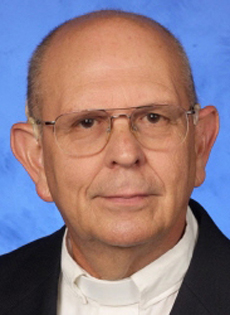
The Ignatian Year, part 2: a Catholic spirituality
Monday, January 10, 2022
*Fr. Eduardo Barrios, SJ
This is the second of a four-part series on the Ignatian Year, which began May 20, 2021 and will conclude in July 2022.
There are many trees in the forest of Catholic spiritualities. Broadly speaking, they can be classified according to states of life. Within lay spirituality we can distinguish many spiritualities, as St. Francis de Sales described them in his masterpiece, Introduction to the Devout Life.
There are many religious institutes that live their own spiritualities. Just to mention one, there is the spirituality of the Carmelites, whose greatest representatives were St. Teresa of Jesus and St. John of the Cross.
Ignatian spirituality belongs to the Jesuits and to the laity who are in tune with the spirit of St. Ignatius.
All Catholic spirituality should be theocentric, Christocentric, eucharistic, ecclesial, apostolic and Marian. But each group lives these characteristics with different nuances and emphases. Let us consider them according to the experiences of St. Ignatius of Loyola:
1. Theocentric:
The relationship of the pilgrim Iñigo (later Ignatius) with God during the maturation of his conversion in Manresa had a strong Trinitarian emphasis. He knew how to address the three divine persons differently. This Trinitarian devotion would accompany him all his life; after his priestly ordination he would frequently celebrate the votive Mass of the Most Holy Trinity. We know the Trinitarian mysticism of the saint thanks to some pages of a spiritual diary destined for destruction. But in public Ignatius did not speak much about the divine persons, because in those times it was dangerous to mention the Holy Spirit. There were Illuminist currents that led to disdain ecclesial structures in order to be guided directly by the Holy Spirit; it was a new form of the old Gnosticism.
In his dealings with God, the saint balanced trust with reverence. The latter he also called "obeisance". The most frequent divine names on his lips and pen were Divine Majesty, Supreme Goodness, Divine Clemency and Infinite Wisdom. To whoever became a Jesuit he would say: "He should further take care to keep always before his eyes first God, and the nature of this Institute which is his pathway to God." (Formula of the Institute, 3)
Love for God impels every Ignatian to seek "the greater divine service". The expression "to seek the greater glory of God" became popular. This search would be immortalized in the Latin acronym "Ad Maiorem Dei Gloriam" (AMDG). It is not an abstract maxim. It is concretized in seeking that all may know God and correspond to his love. Ignatian theocentrism leads to a just anthropocentrism. It is a matter of concern for the salvation of every man and of the whole man. St. Irenaeus had already said it many centuries before: "Gloria Dei, vivens homo" (the glory of God is man fully alive). The living man in the full sense, the saved man, glorifies God.
2. Christocentric:
Converted to the Triune God, St. Ignatius would consecrate himself to the knowledge and following of Jesus Christ. The most frequent request in his Spiritual Exercises reads: "Here it will be to ask for an intimate knowledge of our Lord, who has become man for me, that I may love Him more and follow Him more closely" (Spiritual Exercises, 104). The saint perceived very vividly the divinity of Jesus Christ. He referred to Him as "Creator" (SE 53) and also as "Eternal Lord of All Things" (SE 98).
With no less intensity St. Ignatius was interested in the humanity of Jesus Christ. The Spiritual Exercises propose a very detailed contemplation of all the mysteries narrated in the Gospels. Those who make the spiritual retreat approach the Gospel scenes with the five senses of the imagination, especially sight and hearing. His interest in the humanity of Jesus led him to make a pilgrimage to the Holy Land in 1523. But his plan to stay and live there did not materialize. With a great sense of Divine Providence, he would later admit that this was not God's will.
The young Iñigo was formed as a courtier, knight and man-at-arms in the Castilian Court during the decline of the Catholic Monarchs, the defining regency of Cardinal Jimenez de Cisneros and the beginnings of the imperial government of Charles V. The influence of this environment can be seen in the titles he gave to Jesus Christ. He called Him "Eternal King" (SE. 91) and "supreme leader and lord" (SE. 136).
This blog was originally published as a column in the November 2021 edition of La Voz Católica.


Comments from readers